THE BATTLE OF ORSCHOLZ
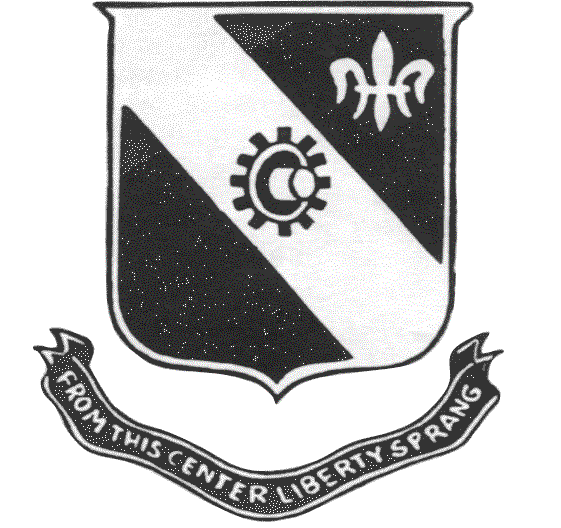 Uncle Freddie's battalion would be involved in this battle and the battalion would suffer enormous casualties. B Company would be completely decimated and C Company along with Uncle Freddie would fight hard and lose many men during this battle in the freezing weather.
The town of Orscholz was located on a hill four hundred feet high. It was surrounded by an arc of pillboxes that ran for more than a quarter of a mile. The Saar River made a 180 degree elbow turn close by, and the landscape was heavily wooded with steep cliffs near the river. Several open fields were located south and east of Orscholz, these fields were between the 301st and their objective. This was the only approach route. The 1st Battalion was selected to make the initial attack. The battalion was first informed of this attack on January 16th, when the company commanders and certain key officers met with Battalion Commander, Lt.Col. George F. Miller to hear of the plan and to make a reconnaissance of the area. Two patrols from Company B were sent out to reconnoiter the enemy positions. The first patrol consisted of Sergeant Walter Acey and PFC's John Ankenbrandt and Calvin Lippel. As the patrol made a reconnaissance of the approach to Orscholz they came upon an enemy pillbox and decided to attack it. In doing so Sgt. Acey was killed when he stepped on a mine and Privates Ankenbrandt and Lippel were wounded and soon captured. The second patrol left for the forest of Saarburg and was never heard from again. Without a proper reconnaissance of the approach to Orscholz battalion staff was forced to use map intelligence only in planning the attack.
Uncle Freddie's battalion would be involved in this battle and the battalion would suffer enormous casualties. B Company would be completely decimated and C Company along with Uncle Freddie would fight hard and lose many men during this battle in the freezing weather.
The town of Orscholz was located on a hill four hundred feet high. It was surrounded by an arc of pillboxes that ran for more than a quarter of a mile. The Saar River made a 180 degree elbow turn close by, and the landscape was heavily wooded with steep cliffs near the river. Several open fields were located south and east of Orscholz, these fields were between the 301st and their objective. This was the only approach route. The 1st Battalion was selected to make the initial attack. The battalion was first informed of this attack on January 16th, when the company commanders and certain key officers met with Battalion Commander, Lt.Col. George F. Miller to hear of the plan and to make a reconnaissance of the area. Two patrols from Company B were sent out to reconnoiter the enemy positions. The first patrol consisted of Sergeant Walter Acey and PFC's John Ankenbrandt and Calvin Lippel. As the patrol made a reconnaissance of the approach to Orscholz they came upon an enemy pillbox and decided to attack it. In doing so Sgt. Acey was killed when he stepped on a mine and Privates Ankenbrandt and Lippel were wounded and soon captured. The second patrol left for the forest of Saarburg and was never heard from again. Without a proper reconnaissance of the approach to Orscholz battalion staff was forced to use map intelligence only in planning the attack.
While the staff planners were planning the assault with insufficient intelligence, the 11th Panzer Division had settled into the the area with orders to reinforce and stabilize the Orscholz-Oblique Switch. 11th Panzer,known as the "Ghost" division was formed in Silesia out of the former 11th Motorized Infantry Brigade. It was first sent into Combat in the Balkans in 1941 where it was credited with the capture of Belgrade. During Operation "Barbarossa" it fought at Kiev and Moscow, and in 1942 outside of Stalingrad. where it suffered tremendous losses trying to relieve the Sixth Army. In 1943 it served at Rostov and in the Summer it took part in the huge tank battles at Kursk. It was later surrounded in the Cherkassy pocket and nearly destroyed. It was reformed in the south of France , adding remnants of the 123d Infantrie and the 273d Reserve Panzer Divisions both of which suffered tremedous losses on the eastern Front. It's History of reappearing after it was reported being destroyed earned it the nickname"Ghost Division". Under the Command of General-Leutnant Wend von Wietersheim. The division was held in reserve during the Battle of the Bulge, when it received new orders to proceed to the Saar-Moselle Triangle to shore up the defenses there. Except for low fuel reserves, the 11th was at full strength in men and equipment when it arrived at the Orscholz Switch.
The Attack
The battalion 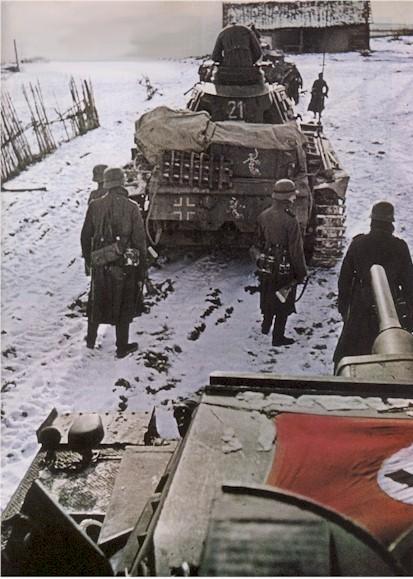 commander,
Lt.Col. George F. Miller, selected Companies A and B to make the primary attack, while Company C remained in reserve. Reinforcing this attack was 1st Platoon of Company D (Heavy Weapons) led by Lt. Robert W. Jonscher and second platoon of Company D. Captain Herman C. Straub's Company B would be in the lead on the attack. Sgt. Ernest W. Halle of the regiment's intelligence and reconnaissance platoon would guide the
attack.
Company B started off at midnight on 19 January in the middle of a snowstorm. The snow was falling very heavily, which reduced visibility to less than six feet. Walking single file in total darkness the men had to grab on to one another so no one would become lost or separated from the group. The snowstorm was blinding. So heavy was the storm that the guides from the IR platoon soon became lost. Two of the companies lost contact with each other, causing the attack to be delayed even further until contact was restored.
commander,
Lt.Col. George F. Miller, selected Companies A and B to make the primary attack, while Company C remained in reserve. Reinforcing this attack was 1st Platoon of Company D (Heavy Weapons) led by Lt. Robert W. Jonscher and second platoon of Company D. Captain Herman C. Straub's Company B would be in the lead on the attack. Sgt. Ernest W. Halle of the regiment's intelligence and reconnaissance platoon would guide the
attack.
Company B started off at midnight on 19 January in the middle of a snowstorm. The snow was falling very heavily, which reduced visibility to less than six feet. Walking single file in total darkness the men had to grab on to one another so no one would become lost or separated from the group. The snowstorm was blinding. So heavy was the storm that the guides from the IR platoon soon became lost. Two of the companies lost contact with each other, causing the attack to be delayed even further until contact was restored.

 Meanwhile, Company B had advanced alongside Company A and had missed the minefield. The company moved directly on the battalion objective, Orscholz. After attacking a few German reinforced positions and capturing some prisoners, Captain Straub placed his men in the woods overlooking Orscholz, and waited for the rest of the battalion. Lt.Col. Miller and the rest of the battalion tried to move forward. To follow Company B's route they had advanced halfway up an exposed slope when they were attacked by numerous enemy machine guns that were skillfully camouflaged and hidden further by the snowfall. The survivors of Company A managed to provide covering fire that enabled the battalion to withdraw down the slope, but advance along this route was now impossible. The enemy knew they were there, and the element of surprise that had enabled Company B to get through no longer existed. Enemy fire increased, the whole area came alive with enemy activity. Calls went out to the supporting 301st Field Artillery Battalion to assist with gunfire support so the battalion could advance.
Meanwhile, Company B had advanced alongside Company A and had missed the minefield. The company moved directly on the battalion objective, Orscholz. After attacking a few German reinforced positions and capturing some prisoners, Captain Straub placed his men in the woods overlooking Orscholz, and waited for the rest of the battalion. Lt.Col. Miller and the rest of the battalion tried to move forward. To follow Company B's route they had advanced halfway up an exposed slope when they were attacked by numerous enemy machine guns that were skillfully camouflaged and hidden further by the snowfall. The survivors of Company A managed to provide covering fire that enabled the battalion to withdraw down the slope, but advance along this route was now impossible. The enemy knew they were there, and the element of surprise that had enabled Company B to get through no longer existed. Enemy fire increased, the whole area came alive with enemy activity. Calls went out to the supporting 301st Field Artillery Battalion to assist with gunfire support so the battalion could advance.After the barrage by the 301st Field Artillery Battalion, Company A again moved out onto the deadly slope, only to face the same intensive enemy fire. Every weapon available to the battalion was used without results. Finally, German artillery fire began to fall among the attacking Americans. Colonel Miller came forward to see what could be done to get his battalion moving. Concerned over the plight of Company B as well as his exposed men on the open slope, he moved into enemy artillery range and was cut down by a burst of Fire and was killed almost immediately. After the death of Lt. Col Miller, the situation began to deteriorate rapidly. Captain Stuart Woodhill assumed temporary command until Major Arthur W. Hodges, the battalion executive officer, came forward and assumed command. Hodges withdrew the remnants of the battalion into the woods and began to organize a counterattack with what was left of battalion. Two platoons from Company A, one machine gun


One soldier had fought throughout the day in the cold, wet snow only to be wounded in the last hours of daylight by artillery fire. Treated by a medical aid man, he was placed in a captured bunker with others before they moved back. There were no beds in the bunker, so the wounded had to lie on the floor in an inch or more of cold water. Nevertheless, it was "warmer than out in the trenches." After he'd spent the night there the man's buddies came back to try to carry him to American lines. His buddies had been cut off, but had convinced Polish defectors from the German army to pretend to have captured them and escort them to friendly lines. A passing American officer ordered them to leave the soldier behind, however, believing that the chances for success were poor enough without trying to carry wounded with them. Later that afternoon "came the most frightening experience of all." From the open door of the bunker the soldier observed German troops approaching. There were several German aid men, wearing Red Crosses but carrying machine guns, coming toward the bunker. He passed out, to recover later as a prisoner of war tended by these same German medics.
Colonel Hagerty still had Company B cut off behind enemy lines. "Throughout the night of the twentieth-twenty-first, the German artillery relentlessly pounded the troops in the woods. The enemy
shells crashed into the treetops and burst, in deadly showers of shell fragments. By the time a count could be taken of the strength of a unit, additional casualties rendered the total incorrect. The reinforced company was gradually being whittled away. " Hagerty spoke with Lt. Col. Samuel L. Morrow of the 301st Field Artillery to arrange a smokescreen to cover a withdrawal of the trapped Americans. Attempts to contact Captain Straub during the night of the twenty-first failed due to the need to preserve radio batteries. Straub had kept his radio in a bunker to prevent the batteries from freezing, and it wasn't until the morning of the twenty-second that he spoke with Hagerty. Ordered to "attack to the rear," Straub declined. He reported to the colonel that "his men were practically out of ammunition and one man had already frozen to death." Every time his men
moved, they drew heavy enemy fire. Any movement would risk entry into hidden minefields. Straub determined to surrender his command to save their lives. Major Hodges. Col. Hardin, Staff and Capts. Smith and Woodill were in a group around the main radio. When Col. Hagerty ordered Capt. Straub to endeavor to break out. When Straub said "he could not leave his wounded men and that he was going to meet with the German commander to arrange for a surrender of the survivors
of the units to avoid total loss of their lives". Col. Hagerty then ordered a new third attack To which Col. Hardin replied, "you just can't do it". Hagerty after a few moments reflection, reluctantly agreed. Hagerty told Straub about the smokescreen and to try and make it back if he could. 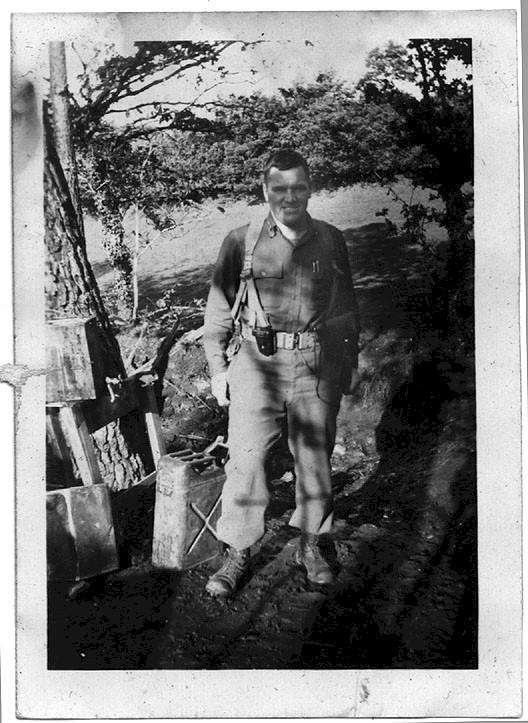
Later at the cut-off company, with the arrival of the promised smoke, Captain Straub passed the word down the trench that battalion had called on the artillery and mortars for smoke shells to try to give the men a chance to get out of the woods back to their lines. Using German prisoners captured earlier to confuse the enemy, Captain Straub led the way. Stepping over their own dead and wounded, the men went down the trench and moved into the open. Enemy fire increased and they broke up into smaller groups of soldiers trying to escape and survive. One group successfully left the trench under direct machine-gun and artillery fire to the temporary safety of a pillbox, where they found the frozen bodies of several of the men who had died during the night and six or eight badly wounded men lying on the cold concrete floor not knowing what was going on outside. Looking in all directions, the group discovered Germans everywhere. There was no way out. The bunker was a trap, and when the men thought that Lieutenant Jonscher had been killed in the trench, the fight went out of them. A few minutes later a strange silence descended over what had been a furious battlefield. The survivors of Company B, with elements of Companies A and D, attached engineers, and artillery observers, surrendered.
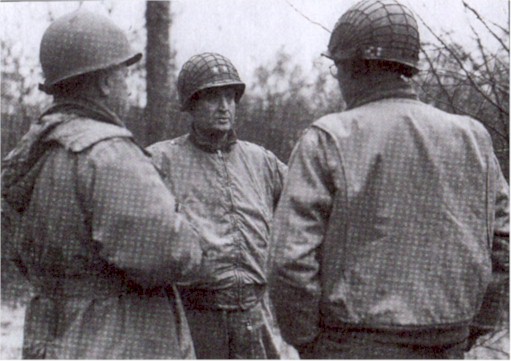
According to the summary of events of the Division's official unit history, on February 20th , the 1st Battalion 301st took a nice little walk down the Orscholz-Weiten Road from the Northerly approach and strolled into the town . While it is true, that one month to the day from the previous effort to take the city, the capture was effectively made, but the entry was definitely not a cake walk. As the attack got underway heavy mortar, and small arms fire was coming from the left and front. A machine gun to left was making the crossing of open ground especially hazardous. From the right rear with all guns blasting came Captain Hocker of B Company, 778th Tank Bn. This was the first ever one on one support by a tank unit and they were the most fearless bunch of men we had ever worked with. Capt. Hocker taking the phone line for his lead tank, spoke with 1/Lt. Howard Rives of the machine gun platoon D Company. Rives quickly told him of their problem with the machine guns to the left. In an instant, he had his cannon of the tank blasting away at those guns joined by his machine gun. This Cleared the way to continue rushing toward the city. Rives was almost as worried about the muzzle blast of his cannons and spraying machine guns as I he had been of the other enemy fire. The machine gun platoon from D Company joined the leading elements of the newly reconstituted A Company in entering the town and immediately set up the machine guns. Firing not only at the street, but spraying the second story windows and every visible aperture the Germans could ossibly hide. Within a few minutes the Companies captured a number of prisoners and from there, moved the machine guns to cover riflemen in the clean up of the city. By mid-afternoon, the town was fully secured. 1/Lt Rives after securing the town went to the western edge of town with Sgt. Kelly, the great 1st Sgt. Of B company to see the area where ill fated assault had been a month earlier. Rives found a cartridge belt and canteen belonging to his friend, Lt. Herndon Inge, Jr. of Mobile, Alabama, that had been cut off of him at his capture. "Wank" as he was so affectionately called, was a great Mortar Section Leader, in whose home Rives had visited when they were stationed at Camp McCain. Rives had resolved then that if he survived the war that he would go to see Inge's parents to tell them what he knew about his fate, but that it would be greatly unfair for him to say what I he had found until it would be certain that their son would not return. So concluded the fight for Orscholz but the war for the men of the 94th would continue.
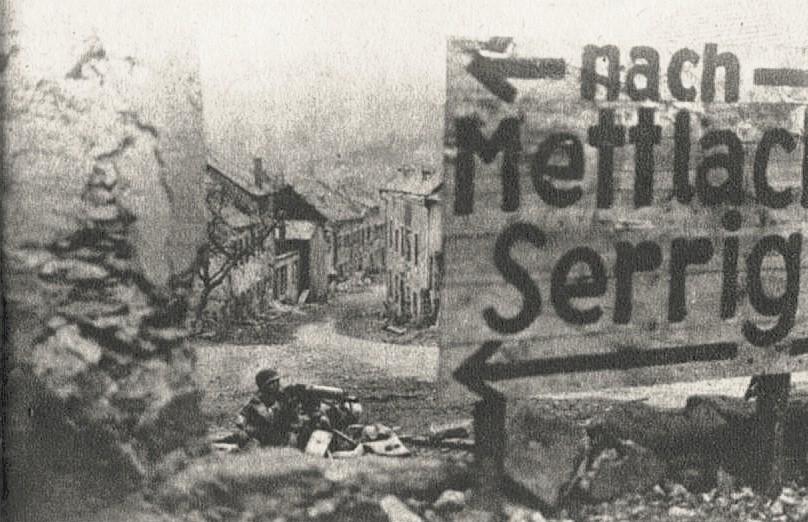 Back
to the ARDENNES-ALSACE: The "Siegfried Switch Line"
Back
to the ARDENNES-ALSACE: The "Siegfried Switch Line"
 They
Served with Honor : Home Page
They
Served with Honor : Home Page
 References,
Sources, and Links
References,
Sources, and Links